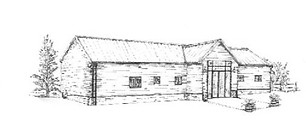Tennis Elbow
- theclaydonclinic
- Apr 17, 2020
- 5 min read
Tennis elbow affects up to 3% of people, mostly between the ages of 30 and 50. You do not have to play tennis to experience tennis elbow. However, 50% of tennis players may experience it at some point, whether it be recreational or professional.
What is Tennis Elbow?
Tennis elbow is a rather annoying condition. It is pain on the outside of the elbow that can slowly presents itself and can take a long time to go away. Once you have it, it can keep resurfacing.
The medical name for Tennis Elbow is Lateral epicondylitis. Lateral meaning outside, epicondyle is a bony lump at the end of a bone, serving as a place of attachment for structures like a tendon (tendon attaches muscle to bone) and -itis means inflammation.
So to summarise it is inflammation of a where a tendon attaches muscle to bone on the outside of the elbow joint.
So why is there inflammation?
As the pain can start to build up slowly and often does not hurt whilst you are doing the activity , pain commonly occurs one to three days after, it is hard to pin point what is exactly causing the damage.
The most common source of the pain associated with lateral epicondylitis is the Extensor Carpi Radials Brevis muscle which attaches via its tendon to your lateral epicondyle. This is the main muscle that extends your wrist (raising the back of the hand bringing, it towards you).
If this muscle is over used by doing an activity that keeps extending your wrist then the tendon becomes stressed and overloaded. Micro tears occur which leads to inflammation at the weak part of the tendon which is where it attaches on the the bone(lateral epicondyle). The release of these inflammatory chemicals induces pain.
So to summarise again, it is an over use injury of the muscle that extends your wrist. However, forearm rotation and supination (turning toward the outside) can also aggravate the tendon.
Activities which cause the repetitive strain on the muscle and overload on the tendons are anything with repeated gripping and/or wrist extension. Such as:
• playing racquet sports – such as tennis, badminton or squash
• throwing sports – or just throwing the ball for the dog
• using shears while gardening
• using a paintbrush or roller while decorating
• manual work – such as plumbing or bricklaying
• activities that involve fine, repetitive hand and wrist movements – such as using scissors or typing
• other activities that involve repeatedly bending the elbow – such as playing the violin
Treatment
Tennis elbow is made worse with activity and can get better on its own with rest. By resting it and not performing any aggravating activities is can take 8–12 months to recover.
The first thing you can do to help is to adapt any movements that may be causing your symptoms. For example, lift objects with your palms facing upwards and elbows bent.
Other than rest and gentle stretching, you can P.O.L.I.C.E your tennis elbow.
Protection – Although at times total rest may be what is needed we need to start using the arm eventually. When we do we need to protect the tendon from further injury. A tennis elbow brace can be a great way to do this.
Optimal Loading – Progressive loading by increasing muscle activity slowly can help stimulate the cells in the recovery process and promote optimal healing.
Ice – Can reduce inflammation after activity.
Compression – Applying a gentle external force to the injured tissue can also reduce swelling and provide mild support.
Elevation–Elevation is accomplished by positioning the injured area above the level of the heart. It can help reduce the pooling of fluid in the injured area.
It maybe important to have an assessment with a physiotherapist or doctor.
There are lots of tennis elbow exercises on the internet and most of them will help. However, if you have tried google and it is not getting better or in fact getting worse it is important to get help. Tennis elbow can easily be aggravated if you do the wrong things.
The degree of injury will dictate the safe amount of load the elbow can take with out causing further aggravation. This will have an impact on how long you should hold the stretches for, how many repetitions you should do of exercises and how much weight you should start with when beginning to load/ strengthen your tendons/muscles.
It may also not be your elbow at all.
The neck can create ‘tennis elbow like’ elbow pain, even when the neck is not painful. Nerves affected by the small points in the neck can cause referred pain into the elbow mimicking lateral epicondylitis. This can even cause the classic point tenderness at the elbow and positive physiotherapy muscle tests.
There are also many exercises in which you should avoid doing like press ups.
You can always email us for more specific advice.
Tennis Specific
Tennis is a great sport. It is enjoyable for all ages and skill levels. However, the physical demands of this sport create perfect opportunities for injuries . As mentioned earlier research has stated that up to 50% of tennis players will develop lateral elbow symptoms throughout their tennis career, with a primary population consisting of recreational tennis players
Overloading of the ECRB tendon during the backhand tennis stroke is thought to be a key reason why.
The backhand which for many of us is our least preferred shot is still an important part of the game. It can be performed using a single or double handed technique. Unfortunately for some, players that perform a single hand back hand are more likely to get this this elbow pathology.
During this shot the elbow is extended and the wrist supinated, this applies large amounts of stress to the ECRB tendon at the lateral epicondyle.
Grip tightness is a key feature of a powerful backhand stroke; however it must be coordinated appropriately with phases of the stroke to prevent injury to the elbow. Experienced tennis players have a tight grip at ball-racket impact, then immediately reduce their grip tightness in the follow-through phase. However, in recreational players we tend to have a tight grip throughout all the phases of the backhand, increasing the load even more on the tendon.
It is important to decrease grip strength and relaxing forearm muscles in the follow-through phase of the backhand stroke.
Can a workman blame his tools? Well yes!!! Overloading of the elbow can also occur if the racquet is not the correct size for you, is too old, the strings are too tight and if you do not have the correct size grip. Incorrect grip size can cause increased force to the elbow.
It maybe worth have a private lesson or 2 with a coach to check your tennis racquet and your technique.




















Comments